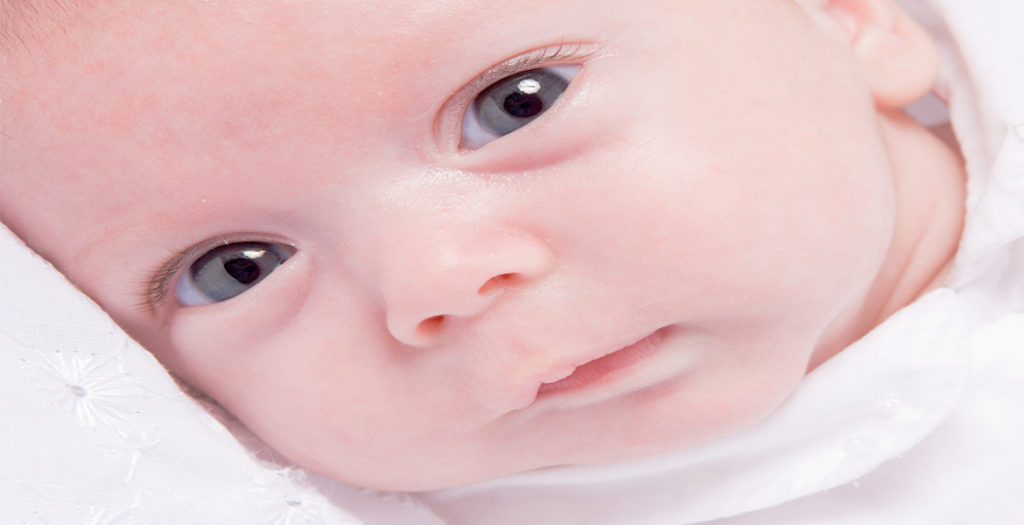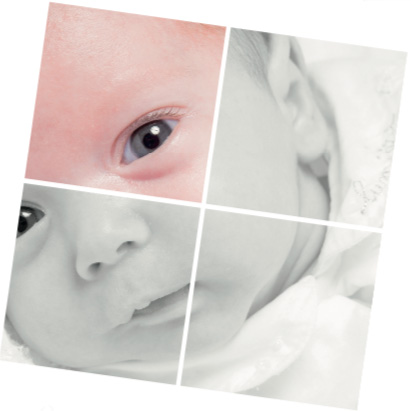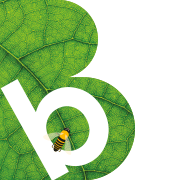
Our useful guide shows you what’s normal for your baby’s features, how to keep them clean and when to seek help
By Health Editor Radhika Holmstrom
It’s quite daunting having a tiny baby to care for. All those tiny fingers and toes. When it comes to the eyes, ears, mouth and nose, there can be all sorts of problems from oral thrush to snuffles. shows you how to care for your baby’s important little places.

Eyes
Newborn babies can see but much or very clearly. After the first couple of weeks, eye muscles are strong enough to focus and they can follow things up to 20 cm away. Under the NHS, all babies have their eyes checked at birth and then at about six weeks: just check to see that your own postnatal care or paediatrician is providing this too.
Care and attention
The best way to keep a new baby’s eyes clean is with cotton wool – even if you’re using a flannel or wipes for the rest of them. Use a fresh piece for each eye, dampen it in cooled, boiled water and wipe the eye gently from the nose out. You don’t need to do anything else – ithas its own cleansing mechanisms (including tears!).
Day-to-day problems
Many newborns have a slight squint for the first couple of months, so don’t worry about this at the beginning. They may also have some crusty eye discharge and this is completely normal.
In very new babies, this may be the result of a blocked nasolateral duct rather than infection and these usually clear up on their own by baby’s first birthday. On the other hand, it may be a sign of conjunctivitis, which small children are very prone to, which produces red, itchy eyes and a sticky discharge (as you’ll find out if you inadvertently pick it up too).
“The main way to tell is if the white of the eye has turned red,” explains paediatric ophthalmologist Ashwin Reddy (childrenseyesinlondon. com). “If it hasn’t, it’s a blocked duct and doesn’t need treatment. If it is red, it’s conjunctivitis and if it has gone on for more than a few days, antibiotic drops may help, particularly to cut down additional infections on top of the conjunctivitis.” It’s extremely contagious, so keep them away from other babies and children till it clears up.
Time to get checked
Infections aside, if you have concerns about your child’s vision – if she still seems unable to focus or look at you, or is still squinting after three months or so – do talk to your doctor and if necessary ask for a referral to an ophthalmologist.
It takes them a while to identify and recognise objects in pastel colours but from early on they should be able to recognise black and white contrasts. “If yours isn’t reaching for a black toy against a white background – say, on a sheet – that’s definitely something to get checked,” says Reddy.

Ears
Babies’ hearing develops before birth but inner ear cells are not fully formed at birth, nor is the part of the brain that processes signals. All babies should have the Newborn Hearing Screening Programme.
Care and attention
Never poke anything inside your baby’s ear – not even if you can see a huge lump of wax just inside the ear canal. Clean around it with damp cotton wool instead, using a new piece each time.
Day-to-day problems
Babies are prone to ear infections, especially if they’ve had a cold. It can be hard to identify, because they don’t always rub an infected ear. If they are old enough for paracetamol, this can help with pain. If it continues, see the doctor. If the doctor suspects it’s a viral infection, antibiotics won’t treat it.
Time to get checked
“If your baby gets repeated ear infections, get referred to a paediatric audiology specialist,” advises Dr Bernie Borgstein, Consultant and in Paediatric Audiovestibular Medicine with Imperial College Healthcare Trust. Repeated infections can lead to ‘glue ear’, when sticky fluid builds up in the middle ear. Again, this usually clears up on its own but may need treatment with hearing aids or grommets (a little tube inserted in the ear).
If you think there’s a hearing issue, get advice. “In very young babies, learning to smile at six weeks is linked to hearing development, because it’s part of communication, just as cooing and gurgling are,” says Borgstein. “When babies get older, they start cooing back when you speak, and then babbling.” If you spot that one of more of these milestones isn’t happening
– particularly if the child has also had repeated infections, and/or there is hearing loss in the family – do go and talk to the specialists.

Mouth
At the beginning, your baby’s mouth – indeed, her whole face – is formed for sucking, with a small jaw, fat pads in the cheek and a tongue reflex that pushes. But over the course of the next six months the jaw changes shape so that she can fit food into her mouth, move her tongue around and chew properly.
Care and attention
To start with, use a cloth wrapped round your forefinger and wipe round very gently inside, massaging the gums to clean them. Once your baby has their first tooth, do this twice a day, using a tiny smear of baby fluoride toothpaste. Don’t consider it optional just because these are milk teeth!
As more teeth appear, move on to a baby toothbrush, though make
this a manual one. “Babies often won’t tolerate electric toothbrushes,” explains paediatric dentist Dr Malcolm Levinkind (drlevinkind.com) who adds: “Don’t use a dummy unless it’s for your own sanity.” If you do cave in, never dip it into anything sweet, including fruit juice. In
fact, remember that all fruit
juices are very high in sugar,
so don’t introduce juices at
all, if possible.
Day-to-day problems
The mouth problem that pretty well every baby (and parent!) endures is teething. There’s simply no way round this one: gels and teething rings may help – the only consolation is that far from being a sign of something more serious, this is entirely natural and, yes, it will pass.
Time to get checked
With tiny babies, the thing to watch out for is oral thrush: a white coating on the tongue that does not rub off, which is caused by a fungal infection.
If you’re breastfeeding your baby can pass it on to you, giving you a lot of pain and cracked nipples (and if you develop it in your breasts you can pass it on to your baby). The doctor can prescribe an antifungal medication.
Up to a tenth of babies have tongue-tie – the frenulum, which attaches the tongue to the mouth, is too tight to let them attach properly to the breast. “Babies should be checked at birth for tongue-tie and also for upper lip tie,” says Levinkind. Even if everything seems fine at this stage, if you have feeding problems later on ask your doctor or lactation consultant if this is the reason, because it can easily be corrected with a very quick and virtually painless procedure.
When your baby’s littletiny teeth do come through, occasionally one of them doesn’t come through properly, leaving a blueish fluid-filled sac or a little raised area. If so, do consult a paediatric dentist. “If you’ve got any concerns then or later, make sure you get them checked out straightaway,” Levinkind advises.
Help and support
Dental care for pregnant women and babies; dentalhealth.org
Advice on baby coughs and colds; nhs.uk and search for ‘pregnancy and baby coughs colds
